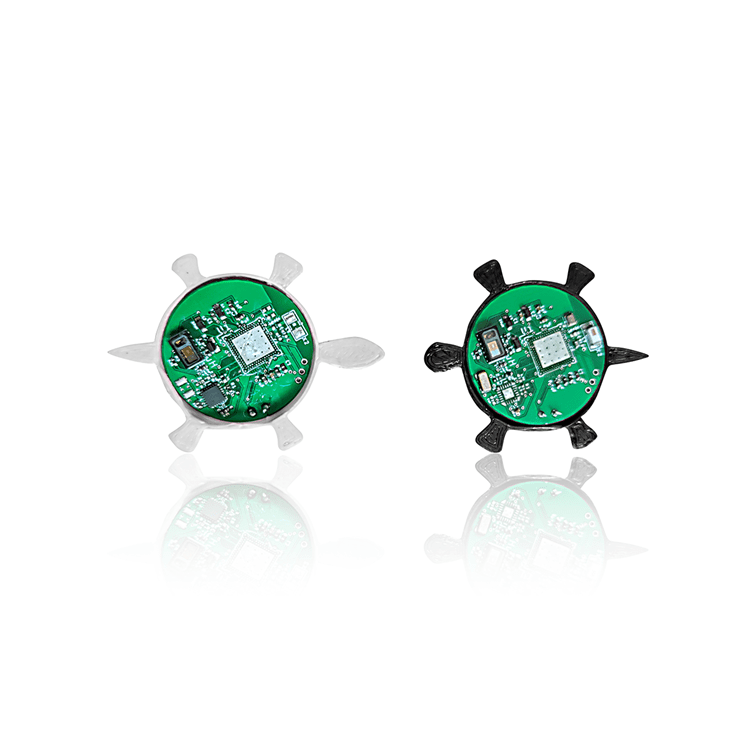Kangmin Xu wins Advanced Wearables contest using Nordic development tools to create baby vitals monitoring system
2021

Nordic’s nRF5340 DK and Power Profiler Kit II support Grand Prize winning project for Nordic and Hackster.io’s open design contest
Nordic Semiconductor today announces that Kangmin Xu from the U.S. has been awarded the Grand Prize for the ‘Advanced Wearables for a Healthy World’ competition, an open design contest jointly organized by Nordic and hardware education community, hackster.io (an Avnet company). The competition received 44 project submissions through the hackster.io online forum, with applicants challenged to create new product prototypes or Proofs-of-Concept (PoC) that solve a problem related to today’s healthcare challenges. Projects could be submitted for ‘Challenge A – Dream Smart Wearables’ or ‘Challenge B – Remote Patient Monitoring’.
Xu was selected as the Grand Prize winner and awarded an electronic Visa gift card ($2,000 value)for creating ‘Baby Guard’, a compact remote baby vitals monitoring system that sends real-time emergency alerts to caregivers to help prevent sudden infant death syndrome (SIDS). The wearable integrates a pulse oximeter and heart rate sensor to monitor vitals including body temperature, breathing, heart rate, and blood oxygen saturation (SpO2) – an important physiological parameter reflecting respiration and ventilation function.
“Based on my experience being worried about SIDS when my own daughter was a baby, I started thinking about designing a solution that constantly monitors a baby's health condition and alerts parents when something goes wrong,” says Xu.

Working with Nordic development tools
The winning project was based on Nordic’s nRF5340 DK—a precertified single board development kit with a dual-core nRF5340 Bluetooth® 5.2 System-on-Chip (SoC) supporting data transfer or connection to other devices using Bluetooth LE—and the Nordic Power Profiler Kit II (PPK2), a low-cost, highly accurate tool for measuring and controlling power consumption in embedded hardware designs. For the baby vitals monitoring and alert system, the nRF5340 DK provides the core processing power to run the complex algorithms for collecting the vital signs data, as well as the wireless connectivity to transmit the data to a smartphone where key metrics can be accessed via the Android-compatible ‘Flutter’ app. (Flutter is an open-source UI software development kit created by Google.) In turn, the smartphone performs as a gateway for storing and pushing the information to the Cloud for further analysis via a Web-based dashboard.
As the world's first wireless SoC with two Arm® Cortex®-M33 processors, Nordic’s nRF5340 SoC is an ideal choice for complex IoT applications including advanced wearables. Entries to the Advanced Wearables challenge typically used the nRF5340 DK to receive and process data from one or more medical sensors, calculate relevant ‘real-time’ statistics based on the data, and send this information over a wireless protocol, such as Bluetooth LE, to a smartphone, PC, or another host device.
“I have previously worked with Nordic solutions and the detailed, professional Nordic Infocenter makes it easy to find almost anything I need including reference designs, sample code, and configurations,” says Xu. “For this project Nordic’s nRF5340 SoC provides a whole new experience with the Zephyr framework, and the code can be easily migrated to other boards. The sensor and peripheral sample codes are extremely rich and the inclusion of the pulse oximeter saves me a lot of time developing a sensor library from scratch.
“The professionally documented nRF5340 DK with embedded programmer is a breeze to use for directly programming my own board featuring the nRF5340 SoC. The PPK2 is a game-changer among nanoamp measurement devices, and is an extremely helpful tool for low-energy battery-powered IoT development.”